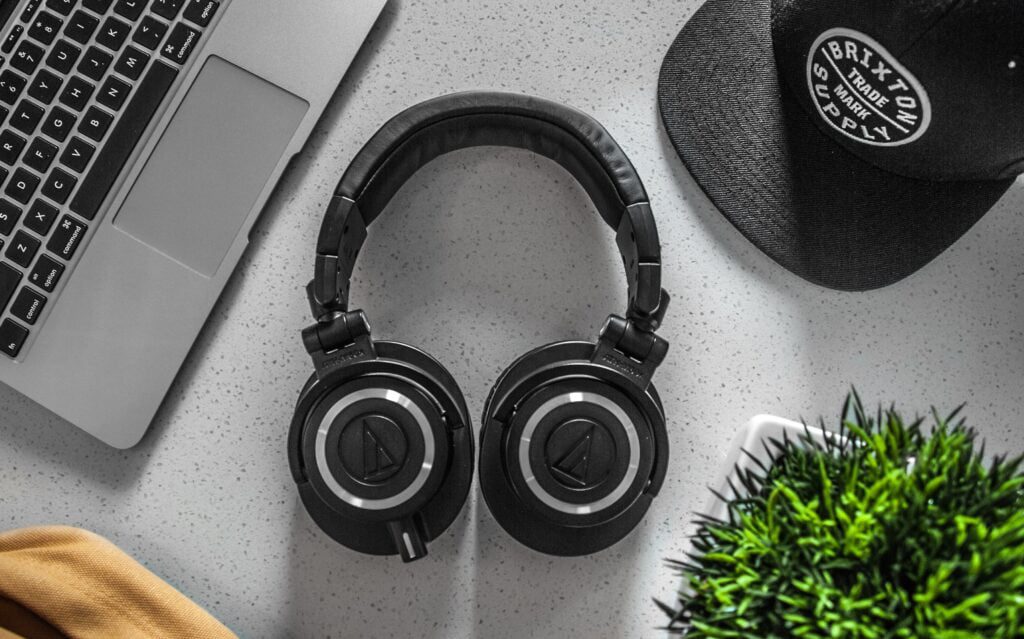What are Open-Ear Headphones?
In the vast world of audio equipment, headphones come in many shapes and sizes, and for some time you could have realized that earbuds are becoming famous in the public because of their wireless ergonomic design. Now companies have just made their innovation in the form of Open-Ear Headphones to meet the needs of audiophiles, fitness enthusiasts, and casual listeners.
Open-ear headphones are a unique and increasingly popular choice. But what are open-ear headphones, and how do they differ from other types? In this article, we’ll dive deep into the world of open-ear headphones, exploring their definition, benefits, and more.
Definition of Open Ear Headphones
Open-ear headphones are a distinctive category of headphones designed to sit on or near the outer ear, rather than enclosing it or sitting inside the ear canal. Unlike traditional over-ear or in-ear headphones, open-ear headphones use a design that allows ambient sounds to enter the ears while still delivering audio.
This design typically involves speakers positioned in a way that they rest just outside or slightly on the outer ear, often secured with a lightweight, comfortable band or clip. The sound emitted by these headphones is directed towards the ear without creating a sealed environment, resulting in a more open acoustic experience.
How Open-Ear Headphones Work
The key feature of open-ear headphones is their unique acoustic design. Unlike closed-back headphones that isolate sound and block external noise, open-ear headphones allow sound to travel to the ear canal while also letting in external sounds.
Here’s a closer look at how they function:
- Sound Production: The speakers in open-ear headphones are designed to produce sound that is directed towards the ear without completely covering or enclosing it. This allows users to hear audio from the headphones while also being aware of their surroundings. They are different from bone conduction headphones which transmit sound through vibrations against the bone near the ear, While they are air conduction headphones use the air passing through the ear canals from the outer ear to the middle and inner ear to deliver sound to the eardrums
- Fit and Comfort: The headphones often feature a lightweight and ergonomic design, with materials chosen for comfort during extended wear. They may rest on the outer ear or use flexible, adjustable bands to stay in place.
- Sound Quality: Air conduction is far superior to bone conduction for sound quality, especially if you want to enjoy a thumping bass with your music. With this audio transmission method of spatial audio earbuds, you can experience the richness of a wide range of sounds, from deep baritones to high pure tone falsettos on the upper hearing threshold. Studies measuring hearing have even found that air conduction is superior to bone conduction for speech intelligibility.
Benefits of Open-Ear Headphones

Open-ear headphones offer several advantages, making them a popular choice for specific situations and preferences. Here’s a closer look at their benefits:
- Safety: Unlink in-ear headphones keep the ear canal open which is safe for your hearing, according to the research published in Research Gate by the Faculty of Electronics, Wrocław University of Technology
“ It turned out that the use of in-ear headphones causes the greatest hearing losses for some subjects (thresholds shifted up to about 20 dB HL at 4 kHz). The daily time of listening also affected the hearing thresholds. It was found that for users of in-ear and closed headphones, an average time of musical exposure of three hours causes hearing loss of 10-15 dB HL at higher frequencies. The use of open as well as semi-open headphones does not influence hearing damage. Thus it would be stated that these kinds are safe in use.”
- Surrounding Awareness: One of the biggest advantages of open-ear headphones is their ability to keep you aware of your surroundings. This is particularly important for outdoor activities like running or cycling, where being alert to traffic and other hazards is crucial.
- Comfort: Because they don’t press against or enclose the ears, open-ear headphones are generally more comfortable for extended use. They help reduce ear fatigue and heat buildup, which can be an issue with traditional over-ear or in-ear designs.
- Sound Quality: Open-ear headphones often provide a more natural and spacious sound experience. The design allows for a more open sound stage, making music and other audio feel more immersive and less isolated.
- Convenience: These headphones are easy to wear and remove. They typically have a minimalistic design that doesn’t require a lot of adjustment, making them convenient for users who need to quickly switch between listening and interacting with their environment.
Use Cases and Applications
Open-ear headphones are well-suited for a variety of scenarios:
- Outdoor Activities: They are ideal for activities like jogging, cycling, or hiking, where maintaining awareness of your surroundings is important for safety. The ability to hear ambient noise while listening to music or taking calls can enhance the overall experience.
- Work and Study Environments: In office or study settings, open-ear headphones can help you stay alert to conversations and other sounds around you, making them useful for collaborative work or group studies.
- Social Situations: They allow for easy interaction with others without needing to remove the headphones. This is particularly useful in social settings where constant communication is necessary.
- Doing Chores: Housewives while doing normal routine tasks at their house and want to enjoy music and at the same time want to stay alert from baby activities, can use these headphones. They will allow you to enjoy your favorite music as well as alert from any sound from a sleeping baby.
Comparison with Other Headphone Types
To fully appreciate open-ear headphones, it’s helpful to compare them with other common types:
- Open Ear vs. Over-Ear Headphones: Over-ear headphones provide excellent sound isolation and are often favored for high-fidelity listening. However, they can be bulky and uncomfortable for extended wear. In contrast, open-ear headphones are lighter and more comfortable but offer less sound isolation.
- Open Ear vs. In-Ear Headphones: In-ear headphones provide a more immersive sound experience by sealing the ear canal. However, they can cause discomfort with prolonged use and block out external sounds. Open-ear headphones, on the other hand, are more comfortable and allow for environmental awareness but may offer less sound isolation.
- Open Ear vs. On-Ear Headphones: On-ear headphones rest on the ear rather than around it, which can be more comfortable than over-ear designs but still offer more isolation than open-ear headphones. Open-ear headphones are lighter and allow more ambient sound.
- We will compare Bose’s different models of headphones in different categories just to give an idea about the specs of different models.
| Specs | Open-EarBose Ultra Open Ear Buds | Over-EarBose Quiet Comfort Ultra Headphones | In-EarBose Quiet Comfort Ultra Earbuds |
| Fit | Gently Hook onto the ear | Fit around your ear | Fit securely in the ear |
| Surrounding | No-Noise Cancellation | Perfect Noise Cancellation | Perfect Noise Cancellation |
| Battery | 7 Hours | 24 Hours | 6 Hours |

Considerations When Buying Open-Ear Headphones
When choosing open-ear headphones, keep the following factors in mind:
- Sound Quality: Look for models that deliver clear, balanced sound without compromising on the open design.
- Comfort and Fit: Ensure the headphones are adjustable and comfortable for long-term use. Lightweight materials and ergonomic designs enhance comfort.
- Durability and Build Quality: Check the materials used and the overall build to ensure they can withstand regular use and varying weather conditions.
- Price Range: Open-ear headphones come in various price ranges. Determine your budget and seek a model that offers good value for money without compromising essential features.
Conclusion
Open-ear headphones offer a unique experience as when you wear them you feel like there is nothing in your ear even you can wear them all day without getting discomfort and they give you a stylish look the best part is you are aware of your surroundings while wearing them, Their ability to keep users aware of their surroundings while delivering high-quality audio makes them a versatile choice for a range of activities. That’s why according to Valuates The global Open-ear Headphones market was valued at US$ 215 million in 2023 and is anticipated to reach US$ 335.2 million by 2030, witnessing a CAGR of 6.4% during the forecast period 2024-2030.
By understanding their design and benefits, you can make an informed decision on whether open-ear headphones are the right fit for your needs. We tried to cover everything, If you have any questions or experiences you want to share you can comment below.

I am Michael a Texas-based recording engineer and sound enthusiast. I contribute to Headphones Pedia’s efforts to educate readers about intriguing new devices and other audio-related issues by drawing on their experience working on several sound projects. I also use AI tools to assist with content creation.




